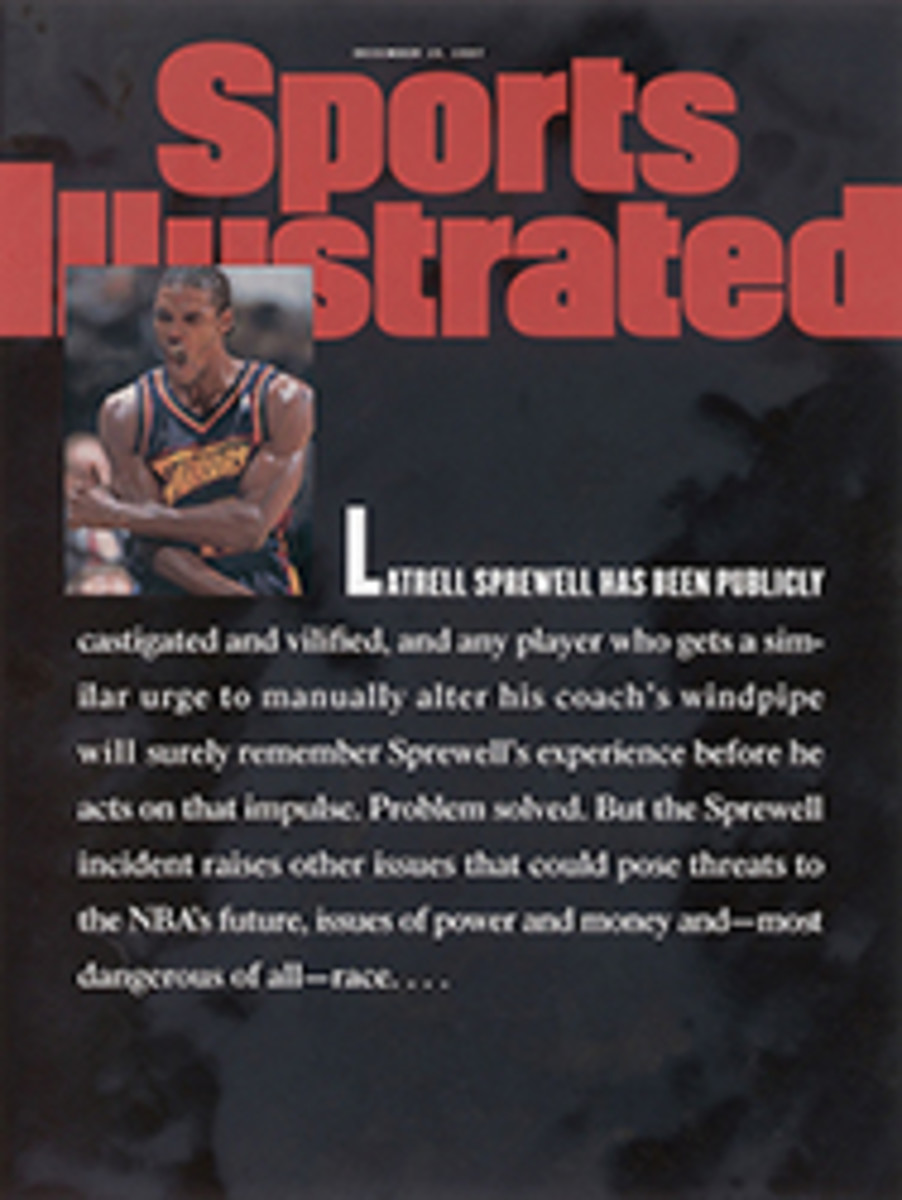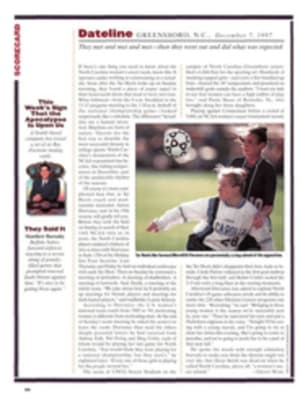
SURVIVORS RUN SLOWLY A HALF MARATHON IN WAR-TORN CAMBODIA IS MORE ABOUT HOPE THAN PERSONAL BESTS
The terror vanishes when To Rithya runs. As Cambodia's top
distance runner strides down the narrow jungle road, the murders
and the beatings sink somewhere deep into his subconscious. He
was only 11 in 1975 when the Khmer Rouge seized power and began
four years of mass murder in a mad attempt to reengineer
society. Two million of the country's 7.2 million people were
executed, starved or worked to death. In the town of Kompot,
young To Rithya lost 13 members of his family, including his
father, brothers and sisters. But when he runs, he leaves those
times behind, and for a while his wounds are healed.
"Sport is very important to me personally, because it has helped
make me strong," he says. "But sport can also help this country."
On Sunday, Dec. 22, 1996, To Rithya joined 650 runners from 15
countries who had come to Cambodia for the first distance race
run through the remains of the ancient city of Angkor, a complex
of intricate sandstone Hindu and Buddhist temples built between
the eighth and 12th centuries. After Siamese troops sacked the
city in 1431, it slowly returned to jungle. With crumbling
temples scattered through the rain forest, Angkor makes one of
the world's most spectacular racing routes. In Cambodia,
however, there is always risk.
The runners in the Angkor half marathon wore white T-shirts that
read, A RACE FOR PEACE AND FRIENDSHIP. Real peace, however, has
not yet come to this tortured land. As runners gathered that
morning, remnants of the Khmer Rouge still roamed the
countryside not far from the ruins. Only three years ago few
outsiders dared venture to Angkor. Of the 10 million land mines
still littering Cambodian soil--the legacy of 30 years of
war--some are buried around Angkor's outlying temples.
Among the thousands of spectators at the race were hundreds of
people missing arms and legs. As many as 80,000 Cambodians have
been killed or maimed by mines since 1979. Sok Saroeun is one of
them. He lost his right arm seven years ago while fighting
against the Khmer Rouge as a government soldier. Using his left
arm to carry a flaming Olympic-style torch, he led the
ceremonial prerace sprint on the stone causeway of Angkor Wat,
the most famous of the temples.
In their struggle to rebuild their shattered nation, Cambodians
have not neglected sports, even though the country is
desperately poor and athletes have little to work with. After a
20-year absence from international competition, the country's
track and field team returned to the Asian Games in 1994 at
Hiroshima, Japan. Last year Cambodians didn't win any medals at
Atlanta, their first Olympics since Munich in 1972, but that
wasn't important. Their presence was the victory.
A similar sense of triumph was palpable at the Angkor race, the
first international sports competition in Cambodia since the
Southeast Asian Games were held in Phnom Penh in 1962. Among the
spectators there were cheers and hope. "I'm so happy to see all
the foreigners here," said 15-year-old Nhit Chida, "because it
means Angkor must really be safe now." As the racers dashed
along the narrow rain forest road, shaded by towering banyan
trees and sugar palms, hundreds of carved stone faces of Buddha
on temple walls and city gates smiled down at them.
In the end Zhan Donglin, a member of China's national team, won
the men's title with a time of 1:05:19. To Rithya came in third,
at 1:13:01. Wang Xiujie, also of China, took the women's top
spot in 1:12:27.
To Rithya will probably never be ranked among the world's
fastest runners; his best time in the half marathon is 13:02
slower than this year's world best. At 33 he is probably past
his prime. "I will run as long as my country needs me to," he
says as he readies himself for the second annual half marathon
at Angkor, on Dec. 21. "But I hope to train others, so there
will be a new generation of Cambodian runners." A new generation
that, he hopes, will be running toward a future filled with
peace, instead of running from the horrors of the past.
New York native Robert Horn is a Bangkok-based journalist who
writes about Southeast Asia.
COLOR PHOTO: OU NEAKIRY/AP Sok Saroeun, who lost his right arm to a land mine in 1990, carried the ceremonial torch at Angkor Wat. [Sok Saroeun and others running]

